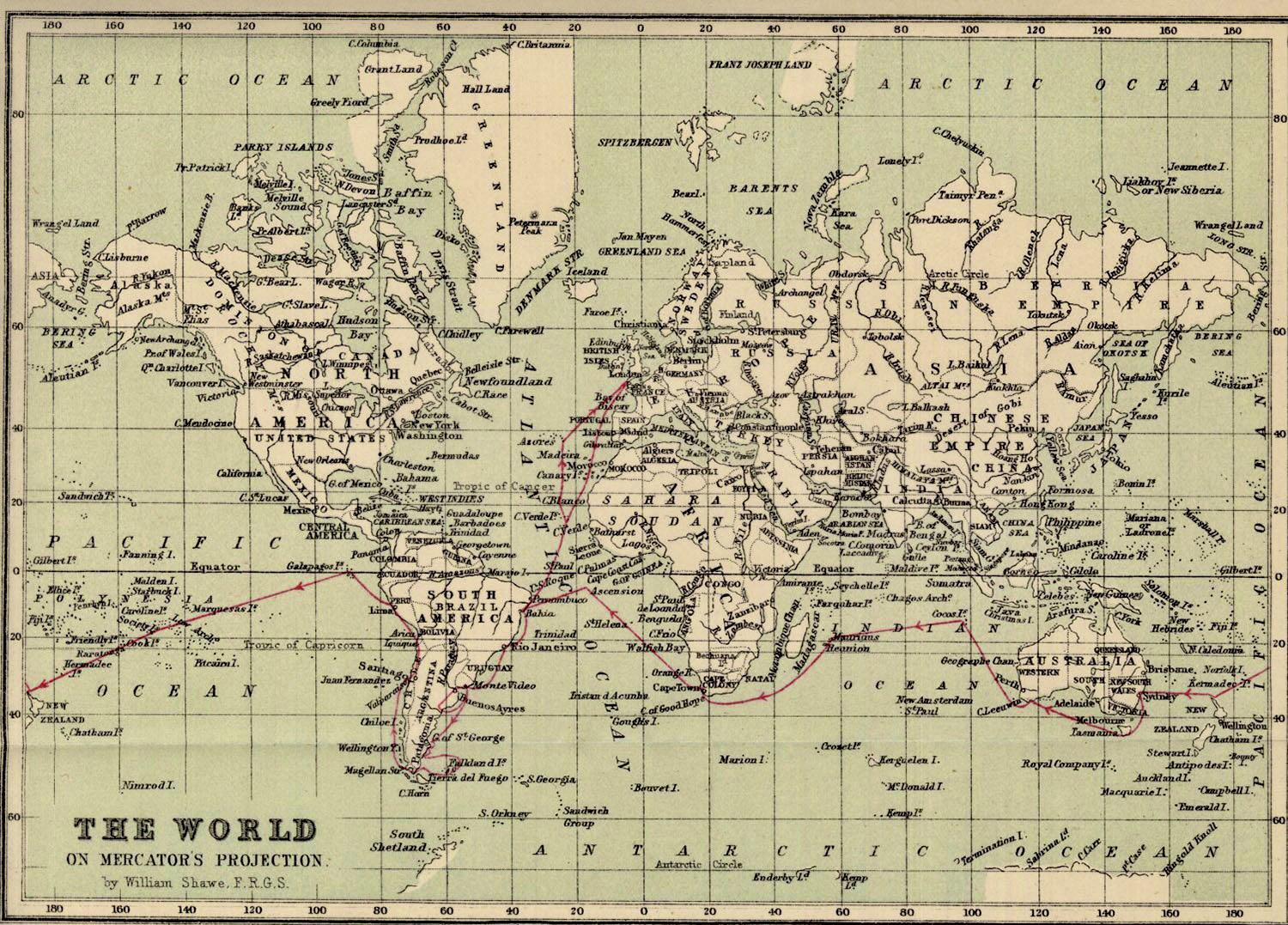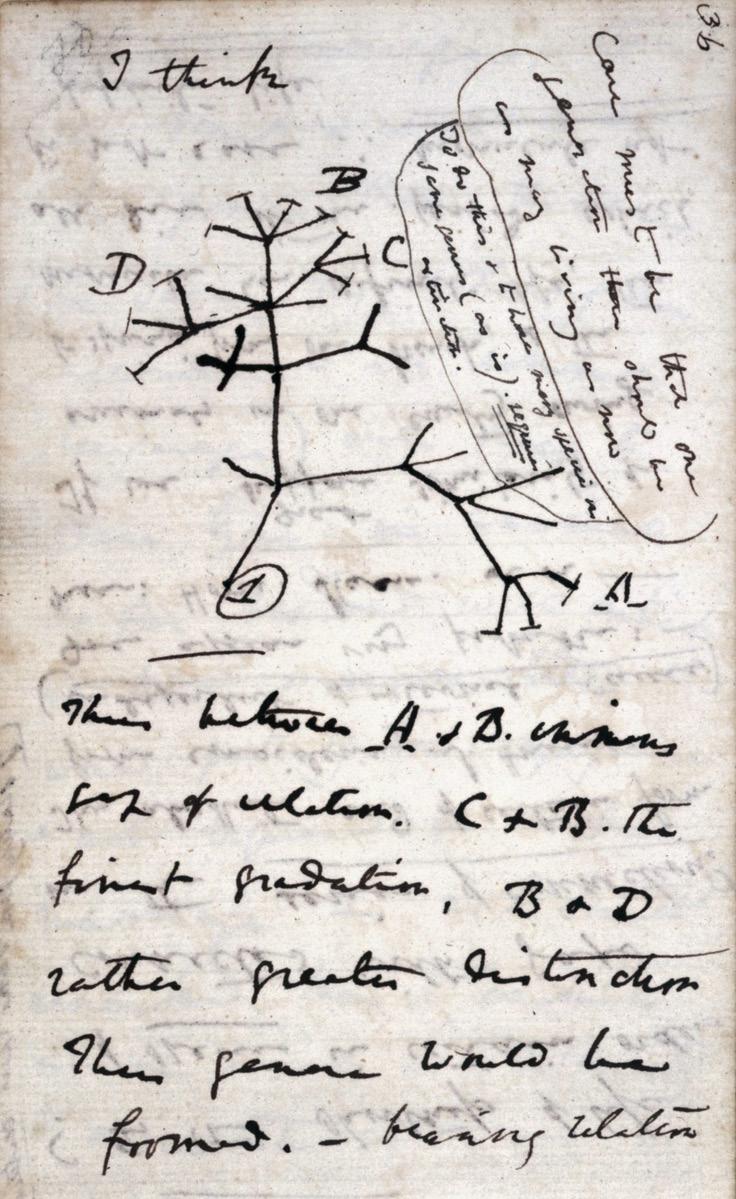
8 minute read
Darwin: Chimp or Chump? Lilian Eloyan
Darwin: Chimp or Chump?
BY LILIAN ELOYAN
Advertisement
When we think of Charles Darwin, we might imagine a brave explorer who trekked the coast of South America, collecting specimens that would lead to the formulation of the single most important biological concept: the theory of evolution by natural selection. But before the landmark publishing of The Origin of Species, the eventual father of evolutionary biology was a failed medical student, unable to follow in his father’s footsteps.1 Before Darwin became Darwin, he was a young man uncertain about his future, searching for an opportunity for adventure. So in 1831, when Captain Robert Fitzroy asked young Charlie to join him on a dangerous, five-year voyage around the world, aboard his ship, the HMS Beagle, the anxious 22-year-old jumped at the offer, despite his fears of the unknown.2 But Darwin wasn’t the captain’s first choice. When two other more qualified experts declined, one of Darwin’s professors suggested him as a possible option—seeing in him the framework of a promising young scientist. However, at that point, the extent of Darwin’s scientific experience was collecting beetles in his front yard.1 His true scientific education was still to come.
Darwin’s family was shocked that their timid and scholarly son would be interested in such a daring expedition. Instead, his father urged him to follow a respectable path and to join the clergy, warning him, “You will be a disgrace, to yourself and all your family,” but Darwin had never been interested in The Church, and his heart had already bound itself to science.3 However, in Darwin’s nineteenthcentury England, religion and science were closely intertwined. Prevailing biological ideas included clergyman Sir William Paley’s claim that all organisms were perfectly tailored, each element working faultlessly together like the intricate mechanics of a watch, with God as the watchmaker.1 Scholars like Paley believed in a “Great Chain of Being,” a hierarchical system of life in which God sat at the top with humans just beneath him, extending down to the simplest organisms.1 However, religious explanations left many questions unanswered.
THE VOYAGE OF THE BEAGLE
Despite his father’s worries that the trip would be “a useless undertaking,” on December 27th, 1831, The Beagle departed from Plymouth with a woefully unprepared Darwin on board as the unofficial naturalist.3,4 Darwin’s fears of the turbulent sea had been quelled by Captain Fitzroy’s reassurance that he could “at any time get home to England,” and that if he liked, he “shall be left in some healthy, safe and nice country.”2 However, Darwin soon exulted in the experience, writing that “Delight itself, however, is a weak term to express the feelings of a naturalist who, for the first time, has been wandering by himself in a Brazilian forest,” but, as his father warned, hazard often accompanied adventure.5 Darwin survived a volcanic explosion, an immense earthquake, and traveled much of the trip on horseback due to severe seasickness.1 But perhaps most terrifying of all, these experiences helped Darwin begin to see a pattern, an explanation of life that seemed to solve the questions that biologists had been pondering for so long. He wrote in his journal: “A
“There is grandeur in this view of life, with its several powers, having been originally breathed into a few forms or into one; and that, whilst this planet has gone cycling on according to the fixed law of gravity, from so simple a beginning endless forms most beautiful and most wonderful have been, and are being, evolved.” — Charles Darwin, The Origin of Species (1859)
bad earthquake at once destroys the oldest associations: the world, the very emblem of all that is solid, has moved beneath our feet.”5 Indeed, the scientific ideas that Darwin had accepted as fact were slowly slipping from beneath him. French naturalist Jean-Baptiste Lamarck’s dominant biological theory was that organisms passed down acquired characteristics.1 Lamarck theorized that giraffes had long necks, for example, because they stretched them out while reaching for leaves, resulting in longer-necked offspring.1 Although Darwin wasn’t aware of the concept of genetic heredity, as Gregor Mendel’s studies on pea plants would only surface decades later, he recognized that any changes made to the body after birth could not be passed onto offspring. His observant eye could tell there was something that everyone was missing.
THE GALÁPAGOS ISLANDS
Four years into the voyage, Darwin visited the Galápagos Islands and collected dozens of specimens of what he believed were wrens, finches, warblers, and blackbirds.1 It was only when Darwin returned to England that he discovered that all of his Galápagos specimens were, in fact, finches.1 Darwin immediately realized his mistake. Although he had previously noted that the sheer diversity of the birds was remarkable considering that all of them lived so close to one another, he hadn’t recorded which island he had found each specimen on.6 Darwin hypothesized that an ancestral species of finch must have arrived on the archipelago and evolved into several different forms over time to suit the unique conditions on their individual islands.7 Moreover, each finch was adapted to its unique habitat with up to ten different species on a single island.7 Finches who lived on the ground had larger beaks, best for cracking seeds open, while tree finches had sharp beaks better fit for chiseling tree trunks to access the insects living within them.7 Building on English scholar Thomas Malthus’ idea that the Earth did not have ample resources to support the constantly multiplying organisms which lived upon it, Darwin deduced that there is a struggle for existence. In other words, the organisms most fit to their environment survive to pass on their traits to offspring as unfavorable traits die out.1 Darwin called this mechanism natural selection. Given enough time, simple creatures could evolve to become infinitely complex through this process. Nearly two years after his return to England, Darwin scribbled in his journal the simple words “I think” beneath which he sketched a rough tree of life, beginning with one ancestral species, and branching off into various different forms.8
THE ORIGIN OF SPECIES
Prior to his return to England, Darwin had journaled, “I dare hardly look forward to the future, for I do not know what will become of me,” knowing that the ideas stirring in his head weren’t going to sit well with the orthodox public.9 Faced with the prospect of revealing his theory to the world, Darwin began experiencing heart palpitations, stomach aches, and nightmares, causing him to put off publishing his work for 23 years after his return.1 However, others were beginning to catch on. French naturalist, Geoffrey-Saint Hilaire noted that all animals look curiously similar during the early stages of fetal development, suggesting a common ancestral background.1

Figure 1: Darwin’s 1837 sketch of the tree of life from one of his personal notebooks that begins with the words “I think.” In the public domain.

Figure 2: A caricature of Darwin as an ape subsequent to the publication of The Descent of Man (1871), Darwin’s follow up to The Origin of
Species. In the public domain.
Finally, in 1858, Alfred Wallace, a fellow British naturalist, wrote Darwin a letter entailing an epiphany he had about the concept of descent with modification.1 It was time. Darwin wrote that it was “like confessing a murder.”10 On November 4th, 1859, Charles Darwin published On the Origin of Species by Means of Natural Selection.
His opposers immediately jumped at his throat, but over the years Darwin gained a group of devoted supporters who defended his theory at the famous Oxford Meeting, a furious battle between some of the greatest English scientists of the 19th century during which Darwin did not utter a single word.1 Darwin’s opponents called him a chimp for believing that humans evolved from apes and a chump for not having the guts to argue his controversial ideas in the public sphere, but Darwin believed that The Origin of Species spoke for itself. Behind Darwin’s now canonical title in scientific history, there was a nervous young man who did not let his previous failures or fears stop him from embarking on the journey that would fundamentally transform our understanding of biology. 1. Zimmer, C. (2006). Evolution: The triumph of an idea.
HarperCollins. 2. Eiseley, L. C. (1956). Charles Darwin. Scientific American, 194(2), 62–76. http://www.jstor.org/stable/26171736 3. Darwin, C. (1999). The Autobiography of Charles Darwin.
Project Gutenberg. (Original work published 1887) 4. Swab, J. C. (2010). Introducing students to Darwin via the voyage of HMS Beagle. The American Biology Teacher, 72(5), 281–286. https://doi.org/10.1525/abt.2010.72.5.5 5. Darwin, C. (1839). Journal of researches into the natural history and geology of the countries visited during the voyage of H.M.S.
Beagle round the world, under the command of Capt. Fitz Roy,
R.N. Cambridge University Press. (Original work published 1845). https://doi.org/10.1017/CBO9781139103831 6. Sulloway, F. J. (2009). Tantalizing tortoises and the Darwin-
Galápagos legend. Journal of the History of Biology, 42(1), 3–31. https://doi.org/10.1007/s10739-008-9173-9 7. Lack, D. (1953, April). Darwin’s Finches. Scientific American, 188(4), 66–73. 8. Darwin, C. (1987). Charles Darwin’s notebooks, 1836-1844:
Geology, transmutation of species, metaphysical enquiries (P. H.
Barrett, Ed.). Cornell University Press. 9. Darwin, C. (1835, August 9). [Letter to W. D. Fox]. Christ’s
College Library (MS 53 Fox 47a, Letter No. DCP-LETT-282).
Cambridge, England. https://www.darwinproject.ac.uk/letter/
DCP-LETT-282.xml 10. Darwin, C. (1844, January 11). [Letter to Joseph Dalton
Hooker]. Cambridge University Library (DAR 114: 3,
Letter No. DCP-LETT-729). Cambridge, England. https:// www.darwinproject.ac.uk/letter/DCP-LETT-729.xml
IMAGE REFERENCES
1. Banner: The Complete Work of Charles Darwin Online [Digital image]. Reproduced with permission from
John van Wyhe ed. (2002). http://darwin-online.org.uk/ content/frameset?itemID=F59&viewtype=image&pageseq =602 2. Figure 1: The Hornet. (1871). Editorial cartoon depicting Charles
Darwin as an ape [Cartoon]. Wikimedia Commons. Retrieved from https://commons.wikimedia.org/wiki/File:Editorial_ cartoon_depicting_Charles_Darwin_as_an_ape_(1871).jpg 3. Figure 2: Darwin, C. (1837). Darwin Tree [Sketch]. Wikimedia
Commons. Retrieved from https://commons.wikimedia.org/ wiki/File:Darwin_Tree_1837.png










